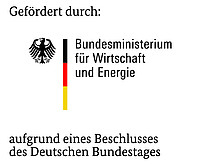Gas permeation barrier layers on the inner side of food packages by atmospheric pressure plasma
Sponsor:
Federal Ministry for Economic Affairs and Energy (BMWi)/ German Federation of Industrial Cooperative Research Associations "Otto von Guericke" (AiF) / Industrielle Gemeinschaftsforschung (IGF)
AIF-IGF 18562 BG
Funded project partners:
- Fraunhofer-Institut für Verfahrenstechnik und Verpackung (IVV)
- Leibniz-Institut für Polymerforschung Dresden e.V. (IPF)
- Forschungsinstitut für Leder und Kunststoffbahnen gGmbH (FILK)
Associated project partners:
- Cavonic GmbH
- HIPP Werk Georg Hipp OHG
- nestec Ltd.
- Nestlé Research Center
- Plasmatreat GmbH
- POLIFILM GmbH
- PPG Flexofilm GmbH
- Tigres GmbH
Contact persons:
Dr. A. Müller
Duration:
01/2015 - 06/2017
Abstract
There are a lot of foods needing packaging solutions with defined barrier properties to prevent penetration of oxygen, carbon dioxide, and water vapour. To produce PET bottles suitable for sensitive drinks, e.g. juice and beer, it is necessary to improve their barrier properties with regard to gas permeation. The permeation especially of oxygen and carbon dioxide through the bottle walls has to be reduced. Currently such drinks are filled in bottles whose barrier properties are maintained by composite layers, blends or low-pressure plasma deposited films. These technologies cause, however, high bottle prices.
The aim of this project is to develop transparent gas permeation barrier layers at the inner side of food packages (e.g. bottles) using atmospheric pressure plasma. A reduction of the oxygen and carbon dioxide permeability to < 1 cm3/m2×d×bar at 23 °C and 50 % rel. humidity is sought for. To reach this goal, the process parameters of the atmospheric pressure treatment by a nozzle system have to be adapted and optimized. Beginning with planar specimens (e.g. PET, PE, PP), the procedure is then transferred to the inner side of the 3D-shaped parts (cylinders, bottles). Other possible applications are bowls, which are often made of polyolefines. Eventually the plasma coating process has to be customized for industrial use (coating velocity, multiple coatings).

Das IGF-Vorhaben 18562 BG der Forschungsvereinigung „Industrievereinigung für Lebensmitteltechnologie und Verpackung IVLV " wurde über die AiF im Rahmen des Programms zur Förderung der „Industriellen Gemeinschaftsforschung und -entwicklung (IGF)" vom Bundesministerium für Wirtschaft und Technologie (BMWi) aufgrund eines Beschlusses des Deutschen Bundestages gefördert. Wir bedanken uns für die gewährte Unterstützung.

